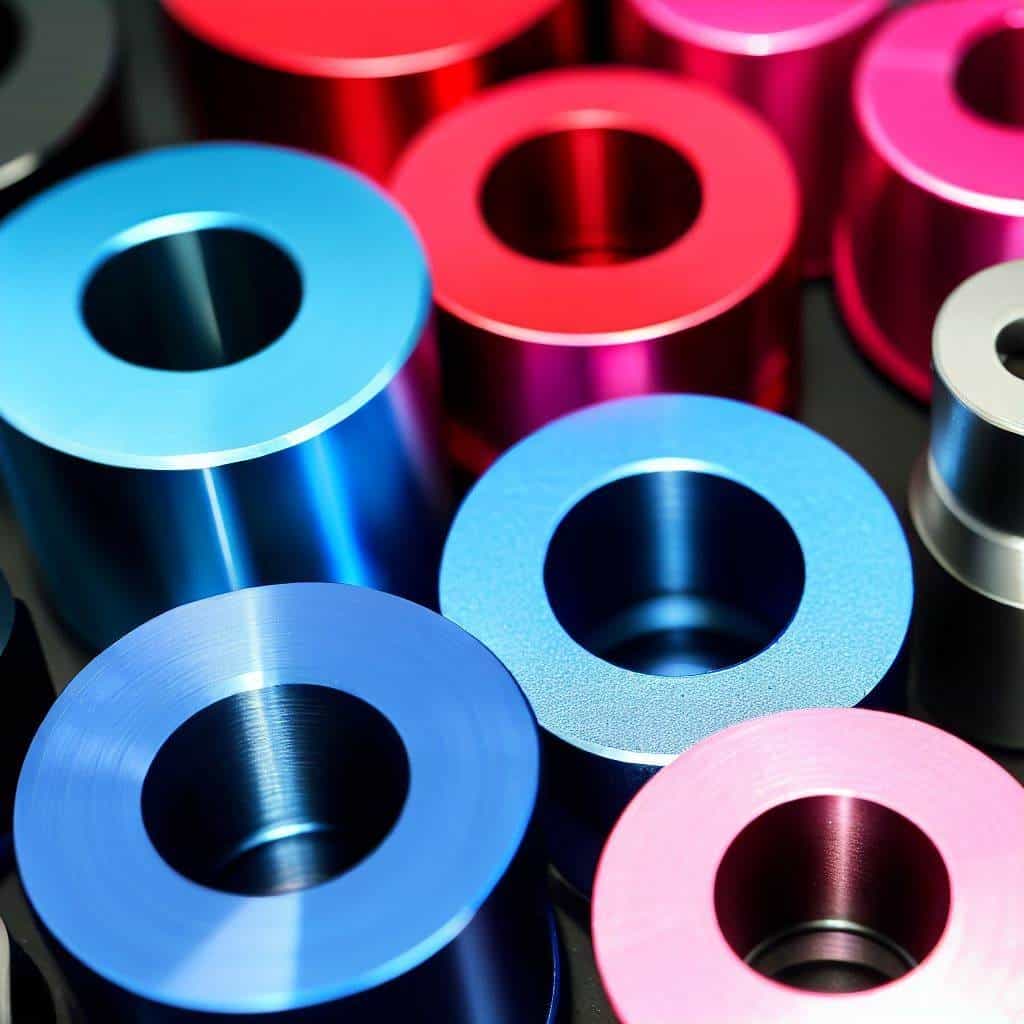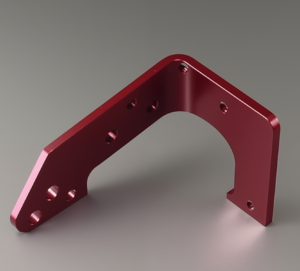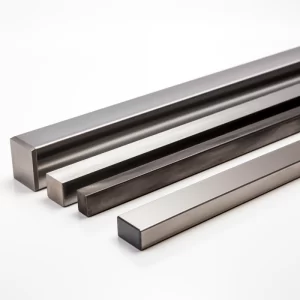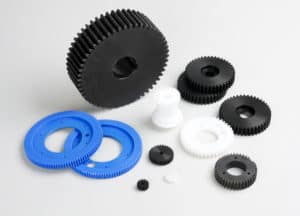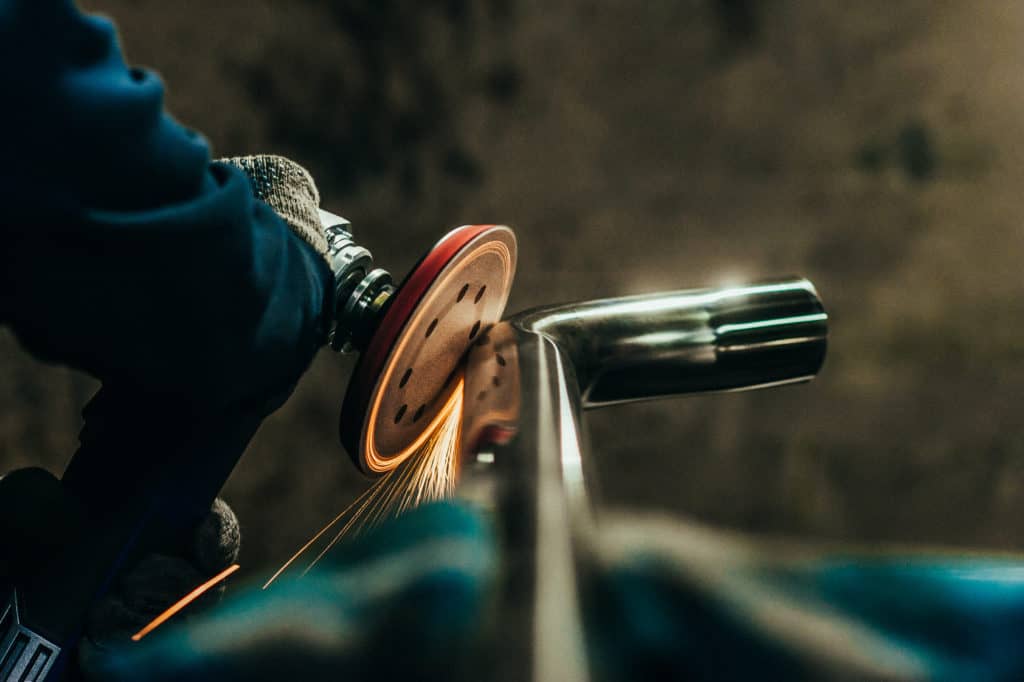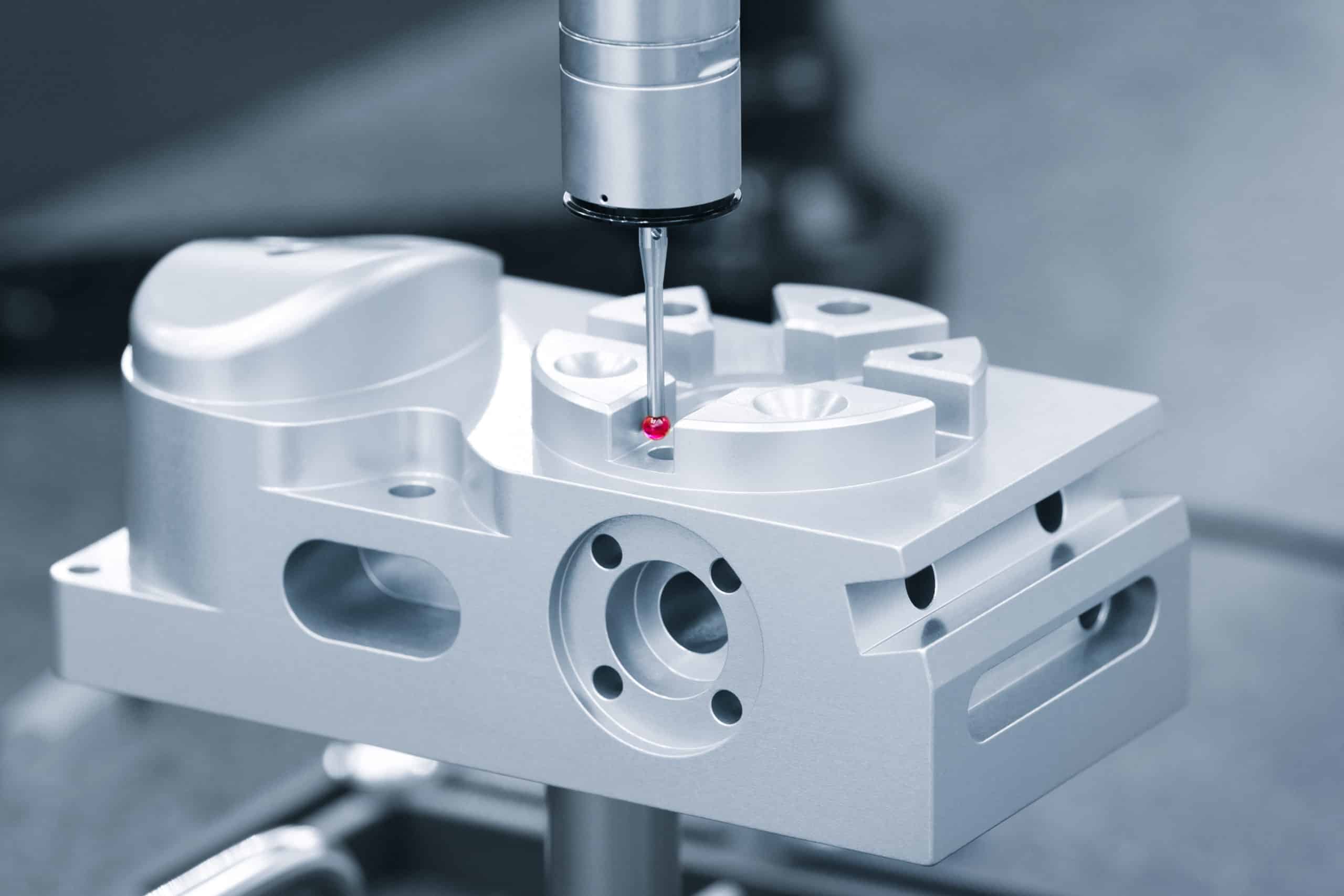Table of Contents
Overview of Anodizing aluminum
Besides improving the material’s performance, anodizing aluminum creates aesthetically pleasing colors and finishes, making it useful for a wide range of industries, from aerospace to automotive to consumer electronics.
Anodized aluminum’s benefits include the following:
- Provide corrosion protection
- More outstanding durability against damage.
- Superior surface quality for painting and adhesive purposes.
These benefits make anodized aluminum ideal for use in harsh environments and can help prolong the lifespan of aluminum components.
This guide will thoroughly explain the process of anodizing. The course includes home anodizing aluminum, different techniques for varying colors for anodized aluminum, and the cost considerations for anodizing aluminum parts and components.
Throughout the guide, we will also answer commonly asked questions.
The Anodizing Process
Aluminum Oxide Formation
Anodizing is a technique that involves an electrochemical reaction to produce a layer of aluminum oxide on an aluminum part to protect it.
The aluminum part acts as an anode, while an electrolyte solution (usually sulfuric acid) serves as the medium for the reaction.
When you subject aluminum to this process, it undergoes oxidation and creates a durable and resistant surface known as an anodized surface.
Electrolytic Solution and Power Supply
The electrolytic solution plays a crucial role in the anodizing process. Sulfuric acid tends to be the preferred solution because it creates a uniform surface.
Chromic or phosphoric acid requires anodizing depending on the method and desired outcome. An external power source is necessary to start the electrochemical reaction.
The current density, measured in amps per square foot, affects the quality and thickness of the oxide layer.
Anodizing Tank and Acid Bath
The aluminum component sits in an anodizing tank containing an electrolytic solution during the anodizing process.
The aluminum piece functions as the anode and connects to the positive end of the power supply. Conductive materials like lead or aluminum, which acts as the cathode, are connected to the opposing end.
It is crucial that the electrolytic solution fully covers the aluminum part and that the acid bath stays at a constant temperature to get the best results.
Proper surface preparation of the aluminum part, including degreasing and cleaning, is crucial before immersing it in the anodizing tank to ensure a uniform anodizing layer.
Following safety protocols during the anodizing process is extremely important because the chemicals can be dangerous.
Wear safety glasses, gloves, and protective clothing to avoid acid burns and other injuries. Adequate ventilation is also essential to minimize exposure to acid mist and fumes.
Types of Anodizing and Their Applications
Chromic Acid Anodizing
Chromic acid anodizing, or Type I anodizing, utilizes chromic acid as the electrolyte solution. This method produces a thin layer compared to sulfuric acid anodizing, typically ranging from 0.00002 to 0.0001 inches in oxide thickness.
Although the resulting oxide layer is lighter and provides less abrasion resistance, it offers excellent corrosion protection. It is particularly suitable for applications that require tight tolerances, such as aerospace components.
Chromic acid anodizing is also known for its environmentally friendly properties, as the process produces fewer toxic byproducts than other anodizing methods.
Sulfuric Acid Anodizing
Sulfuric acid anodizing, or Type II anodizing, is the industry’s most common and widely used method.
This technique employs a sulfuric acid electrolyte solution, creating a uniform and corrosion-resistant layer on the metal surface.
The resulting anodic coating typically has a 0.0002 to 0.0012 inches thickness and provides moderate wear resistance.
Sulfuric acid anodizing is common for applications requiring a balance between durability and cost-effectiveness, such as architectural components, automotive parts, and consumer electronics.
Hard Anodizing
Hard anodizing, or Type III anodizing, is a specialized technique designed to create thicker and more durable anodic films on the aluminum surface.
The process involves using a sulfuric acid electrolyte solution at lower temperatures and higher current densities, resulting in an oxide layer of 0.001 to 0.004 inches thick.
This hard anodized surface provides exceptional wear and abrasion resistance.
It is ideal for applications subject to heavy wear or extreme conditions, such as military equipment, industrial machinery, and high-performance automotive components.
However, hard anodizing is generally more expensive and time-consuming than other techniques due to the additional processing steps and stringent parameters.
Coloring Anodized Aluminum
How to Achieve Different Colors
Anodized aluminum is an excellent choice for aesthetic applications due to its versatility in color and finish. The process involves immersing the part in a dye solution after anodizing to achieve its attractive coloring.
The porous surface of the anodized layer readily absorbs the dye, resulting in a vibrant and long-lasting color.
Color depth and hue are variable by controlling the dye solution concentration and immersion time.
After dyeing, the aluminum part is typically sealed in hot water or a steam bath to close the pores and lock in the color, further enhancing its durability and corrosion resistance.
Blue Anodizing and Its Applications
Anodized metal parts, especially in industries where visual appeal and branding are crucial, often feature blue anodizing as a popular color option.
Blue anodized aluminum finds broad application in various sectors, such as consumer electronics like smartphones and laptops, sports equipment, and automobile components.
Besides enhancing the part’s appearance, the anodized layer maintains its durability and resistance to corrosion.
Using Clothing Dye for Custom Colors
For DIY enthusiasts or smaller-scale projects, clothing dye serves as a cost-effective and readily available alternative to industrial dyes for coloring anodized aluminum.
Clothing dye offers various color options, allowing creative and unique finishes on anodized aluminum parts.
The process of using clothing dye is similar to that of industrial dyes: the anodized part is immersed in a dye solution, typically prepared by dissolving the clothing dye in distilled water for a specific duration to achieve the desired color intensity.
As with industrial dyes, sealing the part after dyeing is crucial to ensure colorfastness and maintain the anodized layer’s protective properties.
Anodizing Small Parts and Components
Durability and Performance
The anodization of small parts and components ensures their durability, performance, and longevity. The anodized layer acts as a shield that protects the aluminum substrate from environmental factors, corrosion, wear, and abrasion.
This enhanced protection is significant for aerospace, automotive, and electronics components, where reliable performance and long service life are paramount.
Additionally, the anodized surface offers improved adhesion for paint primers and bonding agents, contributing to the overall quality and appearance of the finished product.
Cost Considerations
The cost of anodizing small parts and components depends on their size, complexity, quantity, and the Type of anodizing process used.
Prices typically vary per square foot, with hard anodizing being more expensive because of extra processing steps and strict parameters.
Anodizing may be more expensive for small-scale projects or individual components than for more extensive commercial operations.
However, the investment in anodizing is often justified by its enhanced durability, performance, and aesthetics, ultimately reducing the need for part replacements and maintenance over time.
Conclusion
Anodizing is a helpful method that improves the strength, functionality, and appearance of aluminum parts and components.
By forming a protective oxide layer on the aluminum surface, anodizing provides excellent corrosion resistance, abrasion resistance, and improved adhesion for paint primers and bonding agents.
You can choose the most suitable type of anodizing for your specific application from various options, such as sulfuric acid, chromic acid anodizing, and hard anodizing.
The versatility of anodized aluminum extends to its coloring options, allowing for a wide range of hues and finishes to suit various industries and project requirements.
Anodizing is an investment that can yield long-term benefits in terms of part longevity and reduced maintenance, making it a valuable consideration for projects involving aluminum components.
With some research and preparation, you can master the anodizing process and unlock the full potential of this versatile material.
Different acids, like chronic or phosphoric acid, can get different results when anodizing something. It would be best to have a power supply that would give it electricity to do this.
The amount of electricity is measured in amps per square foot and affects how thick and good the oxide layer will be.
Frequently Asked Questions
Most aluminum alloys can be anodized, but the results may vary depending on the specific composition of the alloy. Some alloys, such as the 5xxx series, may develop a thinner anodized layer or uneven color due to their higher magnesium content.
The cost of anodizing aluminum depends on factors like the size and intricacy of the components, the chosen anodizing process, and the preferred finish type. Generally, hard anodizing is more expensive than other methods due to the additional processing steps required. Anodizing is a worthwhile investment as it can improve the product’s durability, performance, and appearance over time.
The duration of the anodizing process varies depending on different factors, such as the Type of anodizing, desired thickness of the oxide layer, and specific conditions applied. Typically, sulfuric acid anodizing takes between 30 minutes to 2 hours, while hard anodizing may take several hours to complete.
The process of anodizing that requires an electric current is necessary to form the oxide layer on the aluminum. Hence, it is impossible to anodize aluminum parts without the use of electricity.
Anodizing primarily occurs for aluminum and its alloys. Anodizing cannot be used on steel and is only suitable for metals such as titanium and magnesium. If you want to process steel parts, it’s better to consider other methods, such as electroplating or powder coating.
Because aluminum is strongly attracted to oxygen, it readily develops a durable layer on the surface during anodization, making it the most convenient metal to anodize.
Suppose you want to do anodizing at home or in a small-scale setup. To proceed, you will require some items such as a power supply, an anodizing tank, a cathode material (e.g., lead or aluminum), an electrolyte solution (typically sulfuric acid), and safety equipment (protective clothing, safety glasses, and gloves). You may also need surface preparation materials (such as abrasives or degreasers) and post-anodizing products (dyes or sealants).
By immersing the part in a dye solution after the anodizing process, the surface of the anodized layer absorbs the dye, resulting in a vibrant and long-lasting color. The piece is sealed in hot water or steam to seal in color and enhance durability.
Different colors are available to dye anodized aluminum with varying dye solutions. The available dye options and the desired appearance are the only factors limiting the choice of color.
